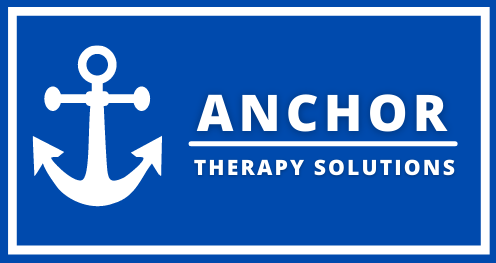Falls Prevention
The Centers for Disease Control and Prevention reports that falls are the leading cause of all fatal and non-fatal injuries in patients over 65 years old. Older people with cognitive impairment or dementia are at higher risk of falling, according to a study published in the Journal of the American Medical Association. An estimated 10 million people in the US suffer from osteoporosis, and an additional 3.4 million people are at increased risk of osteopsorosis due to their low bone mass. Falls prevention is pivotal to focus on [Sources: 1, 6]
Patients, caregivers and health care providers need to know how to address the problem and explore alternative solutions that can prevent falls that can lead to serious injury or death. [Source: 6]
These changes in the home environment are aimed at reducing risks and helping to support people's daily activities more effectively. The most frequently modified home environments aim to reduce hazards and support the person in his or her daily activities. [Source: 6]
Research literature suggests that the behavioral change component is an important part of a successful fall prevention program. Falls Prevention programs employ various behavior-altering techniques such as peer-to-peer interaction with older adults to help people move forward. [Source: 10]
Resource Guide
Our Anchor Therapy Solutions PLLC fall prevention resource guide helps you identify risk factors for your loved ones and takes steps to reduce the risk of a fall. This resource guide contains a list of simple changes you can make at home to reduce your risk of falling. Please contact us to request the fall prevention resource guide.
Our safe and continuous fall prevention resource guide help educate caregivers and seniors to prevent slips, trips and falls at home. Our fall prevention programs are created by trained and certified professionals and are specifically designed for people of all ages.
Universal Fall Prevention
Universal fall precautions are the foundation of any fall prevention program at the home and beyond. Fall prevention should be applied at all times to all patients. The implementation of universal fall precautions requires the training of the individual, caregiver, family and staff who interact with patients
Universal fall precautions are all about maintaining the patient environment to be safe, healthy and comfortable. Universal fall precautions apply to all home, apartment, community mobility and beyond. They are called universal because they can be applied to all patients at risk of falling.
Making all homes Safe - Healthy - Comfortable
Falls are also the leading cause of injuries in older adults at home, reminding us of the important relation between health and housing. By making homes safer and more suitable for older adults, by converting them and making them age-appropriate, we can help reduce the frequency of falls. This research, supported by the MacArthur Foundations Housing Matters program, illustrates the important role housing plays in preventing falls, the leading cause of injury in older adults. [Sources: 2]
From cost-effective adjustments such as removing carpets and redirecting cables, to cost-effective modifications such as replacing door knobs and installing handrails, to more expensive modifications such as building ramps, we know a lot about making homes safer for seniors and preventing falls. [Sources: 2, 12]
According to the Centers for Disease Control and Prevention, one in three seniors falls every year, and less than half of them talk to their doctor about falls. Falls disproportionately affect older adults and are often preventable. [Sources: 8, 9, 11]
Fear of Falling
Although serious injuries from falls can be scary, seniors often avoid certain activities because they are afraid of falling. Whether slippery floors, rickety stairs or power cables: Frequent causes of falls at home can give a false sense of security. If a fall does occur, a proper Medicare plan can help reduce surprising medical costs. [Sources: 9]
Legislation
There is a need for national legislation to introduce fall prevention measures. The 2007 Safety for Seniors Act approved new programs to prevent falls in older adults by public education, research and safety demonstrations. A year later, the bill passed the Senate but failed in the House. [Sources: 3]
The project aims to support local health authorities in developing their capacity to identify older adults at high risk of falling, raise awareness of fall risk and prevention in older adults, and work with community resources to support their fall prevention efforts. On a small scale, successful interventions have been carried out in doctors "surgeries, patient hospitals, hospitals, nursing homes, senior citizens" centres and specialised research centres.a Pynoos believes that social marketing campaigns, similar to those that raise awareness of drunk driving and smoking, can effectively contribute to fall prevention, pointing out that only a core group of advocates for academic and medical professions, nursing staff and policy makers are able to generate the necessary resources and resources. [Sources: 3, 11]
Conclusion
Fall prevention is the key to maintaining the independence of older adults in the community. Various agencies are collecting resources to help local professionals to develop their capacity to identify and implement older adults at risk of falling and through their community resources evidence-based fall prevention programs and practices. Through our partnerships with various organizations in Craven and Pamlico Counties, we are happy to provide resources to our older adult communities. [Sources: 0, 11]
Sources:
[0]: https://www.mymarinhealth.org/programs-services/geriatric-care/fall-prevention/
[1]: https://www.mayoclinichealthsystem.org/hometown-health/speaking-of-health/falls-and-fall-prevention
[2]: https://bipartisanpolicy.org/fall-prevention-starts-at-home/
[3]: https://www.todaysgeriatricmedicine.com/archive/winter08p28.shtml
[4]: https://www.ahrq.gov/patient-safety/settings/hospital/fall-prevention/toolkit/practices.html
[5]: http://www.ihi.org/Topics/Falls/Pages/default.aspx
[6]: https://en.wikipedia.org/wiki/Fall_prevention
[7]: https://www.aafp.org/afp/2017/0815/p240.html
[8]: https://www.dhs.wisconsin.gov/injury-prevention/falls/index.htm
[9]: https://www.everydayhealth.com/longevity/future-planning/prevent-falls-at-home.aspx
[10]: https://www.techenhancedlife.com/articles/best-fall-prevention-program
[11]: https://www.naccho.org/programs/community-health/injury-and-violence/older-adult-falls-prevention
[12]: https://www.cdc.gov/homeandrecreationalsafety/falls/community_preventfalls.html
[13]: https://www.visitingangels.com/fall-prevention-program


